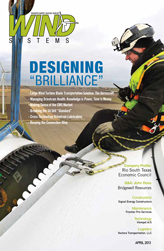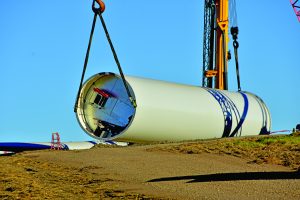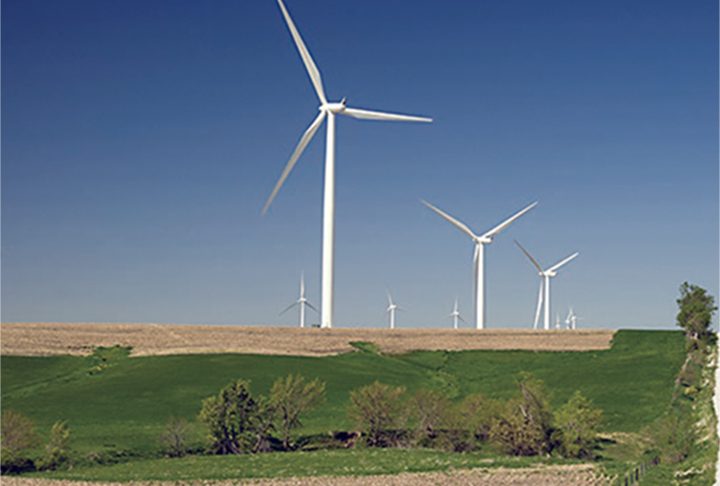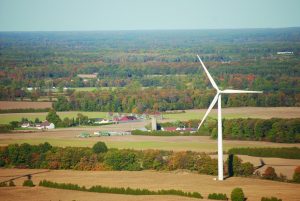Multiple parties are involved in the delivery of successful corrosion protection of offshore wind turbines. The steel builder, paint applicator, and paint supplier are all involved in the process. They must work closely together to achieve the best results.
Corrosion protection is always the last step of the production process. When a job is behind schedule, there is often pressure on the paint shop to make up for lost time. However, trying to gain time by rushing the painting process can have costly consequences. The cost of painting offshore structures in a paint shop is $20–$32 per m², depending on the setup of the workshop and the paint system. If repair work must be done offshore due to premature failure of the corrosion protection, the cost can be 40–60 times higher.
Onshore exposure implies generally cyclic dew/condensation and moderate exposure to sunlight, resulting in moderate corrosion at holidays, weak points, and damaged areas of the coating system. In contrast, offshore exposure implies long-term exposure to humidity with high salinity, intensive influence of ultraviolet light, wave action and the presence of a splash zone area, and high corrosive stress resulting in speedy corrosion at holidays, weak points, and damaged areas of the coating system. This difference in exposure severity is also reflected in the mass and thickness loss per unit surface of low-carbon steel and zinc in the first year of their unprotected exposure. For example, in Germany the onshore corrosivity is evaluated as being about C3, according to ISO 12944, which corresponds to a thickness loss of 25 to 50 µm. In comparison, for splash zone areas, as much as 500 μm1 thickness loss has been observed in the first year of service.
A qualified coating system is not enough to guarantee a successful corrosion protection. Other important factors include the design of the structure (access possibilities), the design of edges and weld seams, the workmanship of the applicator, the specific condition of the steel before surface preparation, and the exposure of the paint system immediately after completing application.
The design and fabrication of steel used in wind turbine construction are critical aspects of the corrosion protection of the steel. Before the applicator starts his job, the steel builder has to provide a structure that is suited to be painted successfully. Coatings can protect only accessible surfaces. This fact is often neglected in design. Appropriate distances required for tools in corrosion protection work must be respected, as well as minimum dimensions of openings for access to confined areas, minimum dimensions for narrow spaces between surfaces, and the incorporation of design features that may be used to avoid deposits accumulating or water being trapped.
For offshore structures, the steel surface should be free from welding spatters and slags, pores, undercuts, and laminations. The surface also needs to be dressed to remove irregular and sharp-edged profiles. Poor weld seam design will cause steel to corrode quickly.
The workmanship of the applicator is also very important. Half of all premature corrosion protection failures are application-related, which means that frequent quality control checks are required. Correct surface preparation and coating thickness are the most important application parameters.
Because offshore structures present some of the toughest corrosion protection challenges for coating systems, the best possible equipment and set up should always be used for the painting job. Automatic blast facilities should be used to minimize variations in surface cleanliness and surface roughness. Painting booths with climate control and temperature regulation are recommended. Two-component spray equipment should be used to minimize mixing errors, and qualified people should be hired for the job.
Today more than ever, the market for corrosion protection of steel wind towers is marked by strong competition. The demand increases for fast-dry, solvent-free coatings, lower thicknesses, and fewer coats. In reality, successful testing and certificates for coating systems does not necessarily guarantee the successful coating performance. Indeed, it is one thing to apply the very best coating under laboratory conditions onto perfectly prepared test panels and submit the panels to laboratory testing. Replicating the same results on site, on thousands of square meters of steel, applied around the clock and sometimes under less than optimal conditions, is a completely different matter.


































